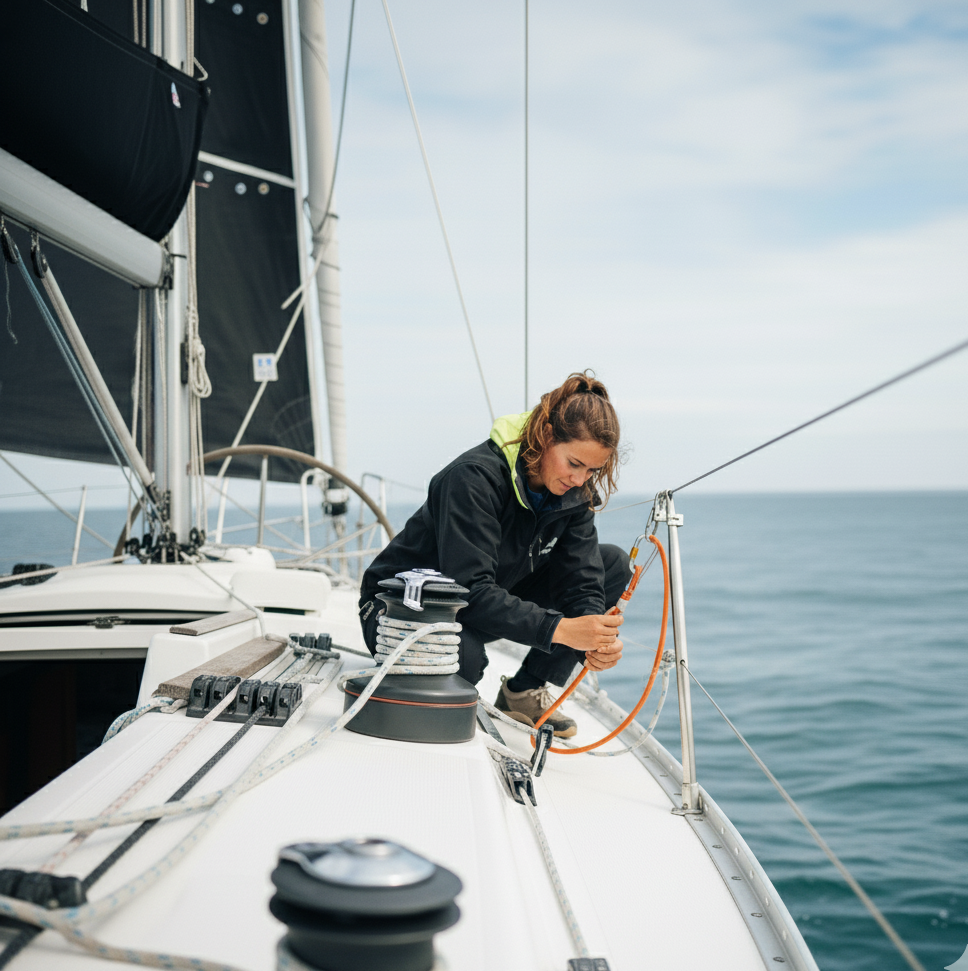The call of the open ocean is a powerful one. For aspiring sailors, joining a yacht delivery crew is an incredible opportunity to build experience and see the world. But before you step aboard a stranger’s boat, a crucial question must be asked: how safe is it to join an unknown skipper for a delivery?

The truth is, it’s a huge step of faith. The safety of your person, and the success of the voyage, rests entirely in the hands of the person at the helm. Knowing how to vet a skipper proactively can be the difference between a life-changing adventure and a dangerous risk.
The Litmus Test: Is He a Professional or “Just a Guy”?
The most important distinction to make is between a professional, full-time delivery skipper and “some guy looking for company.” A professional is running a business; an amateur is looking for a hobby. You can tell the difference in the initial inquiry.
A professional will:
- Have a verifiable and extensive delivery history that you can see and research.
- Be Google-able, with a professional website, a strong LinkedIn profile, or a history of published articles and logs.
- Have a clear, professional contract and a dedicated process for onboarding crew.
- Discuss the voyage in a transparent, business-like manner.
An amateur, on the other hand, will often have a sporadic or unverifiable sailing history. They may be found on forums or social media, but with little to no professional presence to back up their claims. This lack of transparency is a major red flag.
Red Flags and the “Shared Expenses” Model
The biggest red flag to look out for is the phrase “shared expenses.” This term can mean many things, but it often implies that the skipper is looking for you, the crew member, to help cover the costs of the voyage. While a professional delivery has costs, these are covered by the yacht owner. The crew on a professional delivery are paid a daily rate for their time and skill; they are not expected to pay to work.
When a skipper asks you to pay a share of expenses, it suggests they lack the professional backing of a dedicated company. It turns what should be a professional arrangement into a casual trip, which can blur boundaries and create unsafe working conditions.
This is a critical safety issue. If a skipper is asking for shared expenses, it may be because they don’t have the funds to properly maintain the vessel. As a crew member, you have a right to know if the vessel is seaworthy. Always ask the skipper if you can review the vessel’s survey, and look for any recent repair logs. A professional with a safe boat will be completely transparent and open about its condition.
A Note on Women’s Safety

For women considering joining a delivery, proactive steps are essential. While the vast majority of skippers are professional and trustworthy, empowering yourself with knowledge is your best tool for safety.
- Be wary of requests for “companionship.” This is a serious red flag that suggests the skipper’s intentions are not strictly professional. Similarly, be cautious if they specifically state that they are looking for “female crew” as it is often a sign of inappropriate motives.
- Trust your gut. If a skipper’s communication feels off, overly personal, or unprofessional, it’s best to walk away.
- Request a video call. A quick video call allows you to see the person and get a better sense of their demeanor and professionalism.
- Ask for references. A professional skipper will happily provide a list of past crew members you can call to ask about the voyage. Be sure to ask past crew directly about the skipper’s communication, professionalism, and temperament in stressful situations.
Being proactive is the best tool to keep safe.



Leave a reply